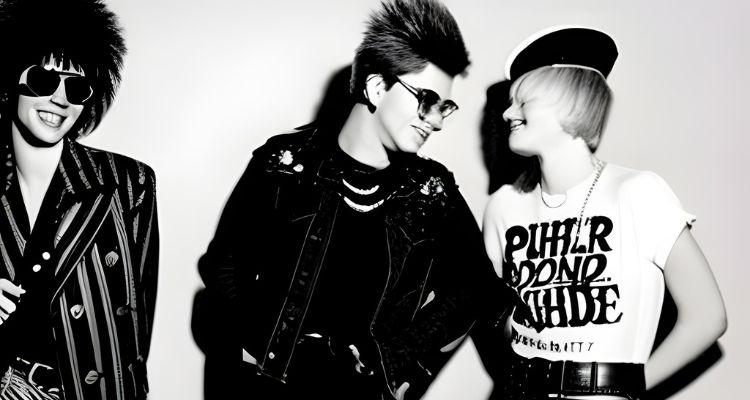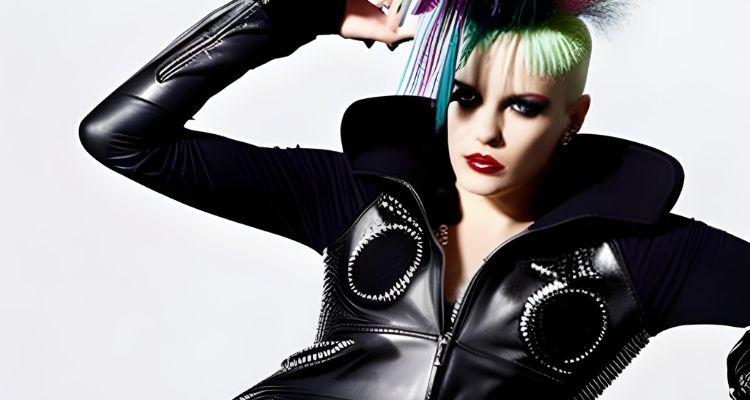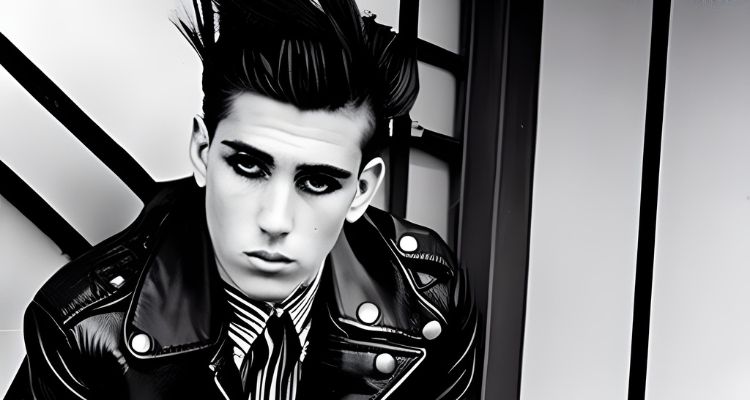Since its debut in the 1970s, punk fashion has been a strong form of self-expression, representing a rebellious attitude that defies convention. 2000s Punk Fashion witnessed a rebirth in the 2000s, with thin jeans, graphic t-shirts, and plaid shirts being trendy products. While the 2000s may feel like a long time ago, punk fashion is a strong and timeless statement that continues to inspire and influence fashion today.
In this essay, we will look at the history of 2000s Punk Fashion, its essential characteristics, and how to incorporate 2000s punk fashion into your wardrobe. We will also address the ageless nature of 2000s Punk Fashion as a statement against uniformity, as well as its continuing impact. Whether you’re a die-hard punk fan or just want to add some rebellious flare to your wardrobe, adopting 2000s Punk Fashion can be a strong form of self-expression and a bold statement of uniqueness.
I. The Origins of Punk Fashion
Punk fashion began in the 1970s as a type of counter-culture protest. It was a reaction to the political and social milieu of the moment, which was marked by disappointment and disaffection. 2000s Punk Fashion was edgy, raw, and anti-establishment, with an emphasis on individualism and self-expression.
The beginnings of punk dress may be traced back to the time’s music scene. Punk music was distinguished by its fast-paced, aggressive sound and controversial lyrics that questioned the current quo. Punk music’s attire reflected its DIY attitude, with many punk performers and fans designing their own clothing and accessories.

2000s Punk Fashion staples include leather, studs, denim, and band t-shirts. Leather jackets, trousers, and vests were popular punk fashion accessories, frequently embellished with studs or spikes. Another fashionable material was denim, with torn or frayed pants and jackets being a punk fashion mainstay. Band t-shirts, typically with daring or controversial designs, were also an important part of punk fashion.
Punk music dress was an intentional rejection of the conventional fashion of the period. It was a manner of expressing one’s individualism and defiance of conventional standards. The haircuts and cosmetics associated with punk fashion represented this rejection of conformity. Mohawks, shaved heads, and vividly colored hair, as well as thick eyeliner and strong lipstick, were popular.
To summarise, the beginnings of 2000s Punk Fashion may be traced back to the 1970s music scene. It was a conscious rejection of popular fashion and societal standards, with an emphasis on uniqueness and self-expression. Leather, studs, denim, and band t-shirts were key elements of punk fashion, as were haircuts and cosmetics that questioned established beauty standards.
II. Reviving 2000s Punk Fashion
Punk fashion saw a rebirth in the 2000s, with a new generation of music lovers and fashion aficionados embracing the rebellious style of the past. Skinny jeans, graphic t-shirts, and plaid shirts became popular punk fashion staples, with many people integrating them into their regular wardrobes.
The Slim jean was a staple of punk fashion in the 2000s. These skinny jeans were synonymous with punk fashion, and they were frequently worn with band t-shirts or graphic tees. Plaid shirts, worn as a layering item or knotted around the waist, were also trendy.

Graphic t-shirts, typically with provocative or political phrases, were another important component of punk fashion in the 2000s. These t-shirts were used to represent defiance and individualism, and they still are today.
Accessories, in addition to apparel, were a significant aspect of 2000s punk fashion. Studded belts, bracelets, and chokers, as well as combat boots and Dr. Martens, were trendy. These items offered a rebellious and edgy twist to any look.
The key to dressing in 2000s punk fashion is to mix and match different aspects to create a look that feels authentic to your personal style. A traditional punk look is skinny jeans with a graphic tee and combat boots, while a plaid shirt knotted around the waist may offer a grunge-inspired touch to any ensemble.
In conclusion, the resurrection of punk fashion in the 2000s saw a new generation of music lovers and fashion aficionados embrace the rebellious style of the past. Skinny jeans, graphic tees, and plaid shirts were trendy, as were accessories such as studded belts and combat boots. Mixing and combining different aspects is crucial to producing a look that feels genuine to your particular style when dressing in 2000s punk fashion.
III. The Timelessness of Punk Fashion
Since its origins in the 1970s, punk fashion has remained a potent means of self-expression. Punk fashion’s ongoing popularity can be ascribed to its reputation as an anti-conformity statement, a method of expressing uniqueness and rebelling against conventional conventions. Despite its change throughout time, Punk fashion continues to inspire and influence modern fashion.

One of the reasons punk dress is enduring is its emphasis on DIY and uniqueness. Punk fashion was and continues to be a source of self-expression, with many people designing and producing their own clothing and accessories. This DIY mentality has resulted in a continuous development of punk fashion throughout the years, with each generation contributing its own distinctive spin to the style.
Another reason for punk fashion’s eternal appeal is its emphasis on authenticity. Punk fashion is frequently connected with bands and performers that exemplify the movement’s rebellious attitude. As a result, punk fashion has always been inextricably linked to the music scene, with many individuals wearing clothing and accessories to demonstrate their support for a specific band or subculture.
The influence of punk fashion on modern fashion demonstrates its ongoing appeal. Punk fashion elements may be seen in anything from high-end designer collections to streetwear companies. Punk fashion has continued to inspire and influence fashion trends throughout the years, from torn and distressed jeans in the 1980s to graphic shirts and combat boots in the 2000s.
IV. Conclusion
Finally, punk fashion has lasted for more than four decades as a powerful means of self-expression, revolt, and individualism. From its beginnings in the 1970s to its resurrection in the 2000s, punk fashion has continued to inspire and influence fashion trends while maintaining loyal to its DIY and genuine roots.
Whether you’ve always loved punk fashion or want to add some rebellious flare to your wardrobe, there are countless ways to incorporate parts of this famous style into your unique style. Punk fashion offers limitless chances for creativity and individual expression, from skinny jeans and graphic tees to studded belts and combat boots.
So, if you want to create a significant and lasting style statement, try embracing the rebellious attitude of punk fashion. It’s a look that has endured the test of time and continues to inspire and influence fashion trends, illustrating that being true to oneself can be the most potent form of self-expression.
